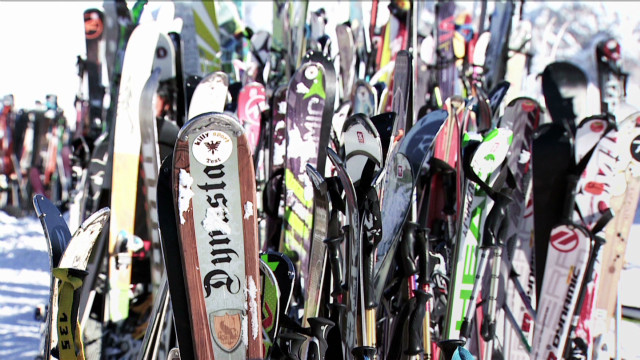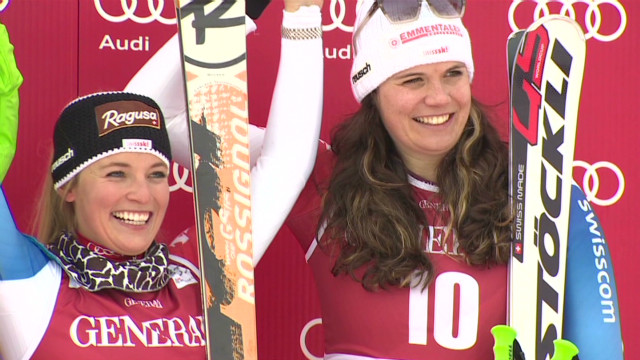Story highlights
- Austrian skiing legend Franz Klammer was a Hahnenkaam specialist
- He won four World Cup downhills on the famous but feared slopes
- Klammer claimed five overall World Cup downhill crowns
- His most famous victory came at the 1976 Winter Olympics in Innsbruck
The relationship between sporting greats and great venues and events is often complicated.
Usain Bolt thrives at the Olympics. But Sachin Tendulkar never scored a century at the home of cricket Lord's while the clay courts at the French Open blunted the talent of tennis legend Pete Sampras.
In downhill skiing, though, the man widely considered the best ever had few relationship issues with the mountain all in his sport want to conquer.
Franz Klammer won five overall downhill World Cup titles. At one stage he was so dominant he won 11 races in a row.
And at downhill's most famous and feared slope, the Streif, on the Hahnenkamm mountain in Kitzbuhel, he came down the quickest four times.
The Streif means strip or stripe. Its combination of blind turns and varying gradients make it the hardest and scariest out there.
"The first time when I came here and I saw the downhill I said: 'I'm not doing this, these guys are crazy, they are just nuts'," Klammer told CNN's Alpine Edge.
'It is the most difficult and daring downhill on the whole circuit. That's why its such a good race. If you are a good downhiller you've got to win Kitzbuhel."
By the sound of it, Austrian ace Klammer knows every nook and cranny of the course so well it is as if he could ski the course blind.
"You have no time to get into the race.
"If you compare it to Wengen, there you start with a few gentle turns.
"On the Streif you accelerate from 0 to 100 kilometers an hour in just three seconds."
And just five seconds after the start you hit the "mousetrap", a blind jump where the racers pick their line from trees on the other side of the valley.
"The first time I did it I thought I couldn't make it. I tried it and I was going very awkwardly and I did it and I thought wow! And then it became my favorite part of the course," recalls Klammer.
"Then you have the Steilhang -- which translates as steep rock slope -- it's the most difficult turn. It's a left hanging turn which traverses a hill leaning the other way and you have to carry all your speed through it to the flat bit next.
"If you have no speed there you're done. You can drink your beer half way down," adds Klammer with a chuckle.
And well might he laugh. He did win here four times, a record only broken last year by Switzerland's Didier Cuche.
"The first was very special because I had won all my races up to Kitzbuhel. It would be my fifth victory, which would tie the record for wins in one season.
"I had a crash in the training run, so was a little injured. Everything went wrong, but still I won the race, and went on to win the next and set a new record."
For his first victory in 1975 he was the hot favorite. Not so in 1984.
"I didn't win Kitzbuhel for seven years. I couldn't believe it, this is my downhill and I couldn't win it any more. What's happened?
"And then I was in the starting gate in 1984 and I knew I was going to win this race. No matter what. I was going for it."
Klammer is back in Kitzbuhel where this weekend the latest generation tackle the slope which has staged races since 1931. In a sport where the talk now is all of preparation, his advice is a little surprising.
"I know exactly where I want to ski but usually I am not where I want to ski!
"The big thing you have to be able to do is improvise, not stick to your line. If you stick to your line, most likely you are going to be very slow. You just let it go. And then sometime you are 10 meters off your line and you just have to go on from there."
It was this ability to think on his skis that secured his most famous non-Hahnenkamm victory at the Olympic Games in 1976 in front of a ecstatic home crowd in Innsbruck.
He was the last man to go in the final and the hopes of a nation rested on his shoulders.
"Halfway down I looked at the crowd and they were cheering but not that enthusiastically, and I thought I better do something, better change something, otherwise I will not win the race.
"So I changed totally the line, and went all the way up to a fence on a big right hander. I hadn't even inspected up there. I was skiing right on the edge."
It seems the most famous races of them all really are won not beforehand, but in the 100-odd seconds it takes to get to the bottom.

















